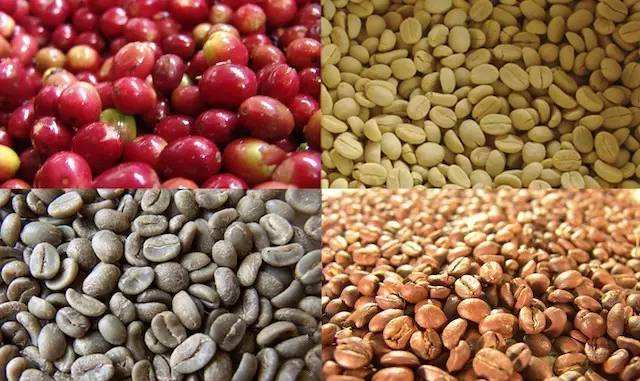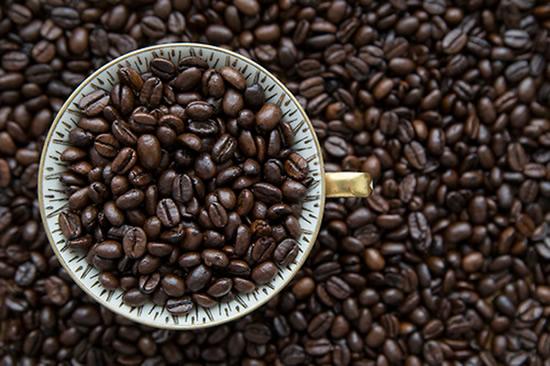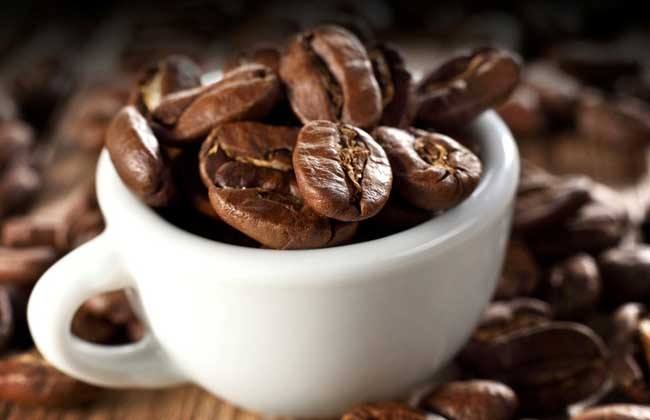Cuba Crystal Mountain Coffee Bean Roasting Area Flavor Introduction
Follow the caf é (Wechat official account vdailycom) and found that Beautiful Cafe opened a small shop of its own.
Cuban small crystal, the color of raw coffee beans is yellow, the beans are slightly smaller than those in the Caribbean, the natural washing method, the latter part of the sun-dried coffee beans, less defective beans and empty shell beans, high moisture content consistency of coffee beans.
Shallow roasting City (fragrance): when injected with water, coffee powder and hot water produce a strong sweetness of honey, soft taste with a little peppermint refreshing, wheat aroma will not feel uncomfortable (Kaka), coffee aftertaste in the middle of the tongue like mint gum across the refreshing, this is a good sour coffee without killing breath.

Due to the slightly lower moisture content of coffee beans (between Brazilian beans and East African beans), the bean body is softer, and the taste of esterification into deeper baked milk is very smooth and soft.
Re-baking (general C): the pure sweetness of wheat, the sweet and sour taste of blueberry jam is only found slightly, it may also be masked by the strong aroma of brown sugar water, and the aftertaste is a very long-lasting sweetness of melons and fruits in your mouth.
Cuba is familiar with and distant countries, familiar with the Cuban baseball team often win all levels of baseball world championships, far away is Cuba on the other side of the world in the beautiful Caribbean, coffee and other Cuban industries are state production and management, the best production of Cuban coffee for the Central Mountains region (Escambray), the Central Mountains area in addition to coffee there are quartz crystals and other precious minerals So the Central Mountains region (Escambray) is also known as Crystal Mountain. The production of Cuban Crystal Mountain coffee is rarely monopolized by Japan's Meiwa and France's Cafe Legal Coffee Company. Cuban Crystal Mountain coffee is a typical island bean with a slightly sour but long-lasting taste and a sweet melon and fruit flavor.
Where is Crystal Mountain?
"Crystal Mountain" is not the name of Cuba's producing area. "Crystal Mountain" is the highest grade of coffee in the Cuban official coffee association classification system. The Cuban Coffee Association classifies coffee beans into nine grades according to particle size and flavor, with the highest being Crystal Mountain, Extra turquino, Turquino, Altura, Montana, Cumbre, Serrano superior, Serrano Corriente and Caracolillo.
At present, most coffee farms in Cuba are state-owned, but in 1990 the government released part of the land for coffee farmers to grow, but coffee production is still less than in previous years, Crystal Mountain production is very small, and coastal areas are hit by hurricanes from time to time, resulting in a shortage of supplies. Cuban coffee is mainly sold to Japan and France, while Japan almost monopolizes the highest quality Crystal Mountain Crystal Mountain, so it is rare to get high-quality Cuban coffee.
The planting area of Cuban coffee is divided into three parts, which are planted on the slopes and valleys above sea level from 1000 to 2000 meters above sea level, with the largest proportion of Santiago de Cuba and Granma in the east accounting for 70% of the country, followed by the central villa Clara and Sancti Spiritus accounting for 20%, and the western Pinar del Rio accounting for 10%. These areas provide a quite comfortable growing environment for coffee beans, with an average temperature of 21 degrees in winter and 25 degrees in summer. The rainfall is moderate, the humidity is evenly distributed all the year round, and the soil is deep and fertile. All planted Arabica (Arabica) varieties, to Tibica (Typica). In 2000, the United Nations Educational, Scientific and Cultural Organization (UNESCO) listed two coffee producing areas, Santiago and Guantanamo, as World Heritage sites.
Important Notice :
前街咖啡 FrontStreet Coffee has moved to new addredd:
FrontStreet Coffee Address: 315,Donghua East Road,GuangZhou
Tel:020 38364473
- Prev

The most representative coffee variety of Crystal Mountain Coffee in Cuba
Following caf é (Wechat official account vdailycom) found that Beautiful Caf é opened its own shop, Cuban Crystal Mountain Coffee (Cubita Coffee). With fertile land, humid climate and abundant Rain Water, Cuba can be called a natural treasure land for coffee cultivation. The suitable natural conditions provide a favorable natural environment for the growth of coffee trees, and coffee is well planted and developed here.
- Next

Introduction to the Flavor of Jadeite Coffee Manor in Nicaragua
Follow the caf é (Wechat official account vdailycom) found that the beautiful cafe opened a small shop of its own, Green Jade: Specialty Coffee high-altitude selected bean producing area Nueva Segovia grows in the green jadeite above 1450 meters above sea level, and the coffee produced by its estate is loved and valued by international buyers all the year round; during the harvest period at the beginning of each year, buyers often go to
Related
- Detailed explanation of Jadeite planting Land in Panamanian Jadeite Manor introduction to the grading system of Jadeite competitive bidding, Red bid, Green bid and Rose Summer
- Story of Coffee planting in Brenka region of Costa Rica Stonehenge Manor anaerobic heavy honey treatment of flavor mouth
- What's on the barrel of Blue Mountain Coffee beans?
- Can American coffee also pull flowers? How to use hot American style to pull out a good-looking pattern?
- Can you make a cold extract with coffee beans? What is the right proportion for cold-extracted coffee formula?
- Indonesian PWN Gold Mandrine Coffee Origin Features Flavor How to Chong? Mandolin coffee is American.
- A brief introduction to the flavor characteristics of Brazilian yellow bourbon coffee beans
- What is the effect of different water quality on the flavor of cold-extracted coffee? What kind of water is best for brewing coffee?
- Why do you think of Rose Summer whenever you mention Panamanian coffee?
- Introduction to the characteristics of authentic blue mountain coffee bean producing areas? What is the CIB Coffee Authority in Jamaica?

